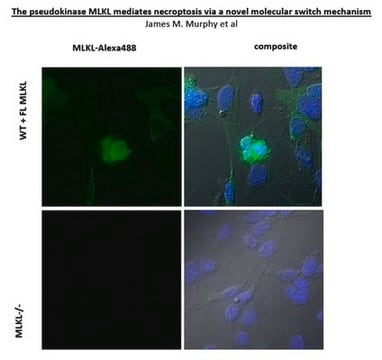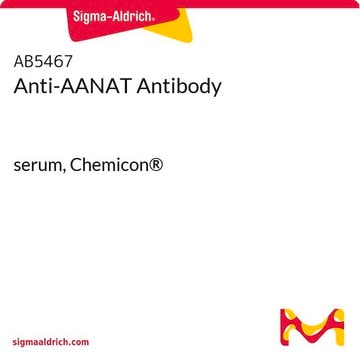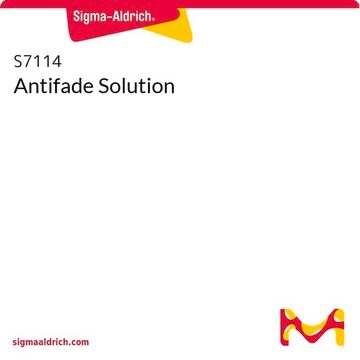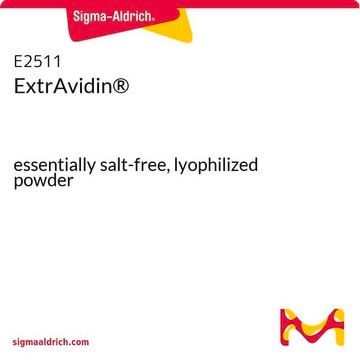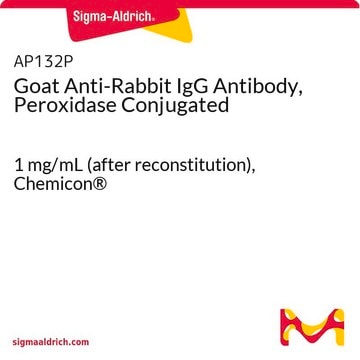MABN1797
Anti-Prdx-6 Antibody, clone TAG-2A12
clone TAG-2A12, from mouse
Sinónimos:
Peroxiredoxin-6, EC: 1.11.1.15, 1-Cys peroxiredoxin, 1-Cys PRX, 24 kDa protein, Acidic calcium-independent phospholipase A2, aiPLA2, Antioxidant protein 2, Liver 2D page spot 40, Non-selenium glutathione peroxidase, NSGPx
About This Item
Productos recomendados
biological source
mouse
Quality Level
antibody form
purified immunoglobulin
antibody product type
primary antibodies
clone
TAG-2A12, monoclonal
species reactivity
human
packaging
antibody small pack of 25 μg
technique(s)
flow cytometry: suitable
immunocytochemistry: suitable
immunofluorescence: suitable
immunoprecipitation (IP): suitable
western blot: suitable
isotype
IgG1κ
NCBI accession no.
UniProt accession no.
shipped in
ambient
target post-translational modification
unmodified
Gene Information
human ... PRDX6(9588)
General description
Specificity
Immunogen
Application
Immunocytochemistry Analysis: A representative lot detected Prdx-6 in Immunocytochemistry applications (Ding, V., et al. (2014). MAbs. 6(6):1439-52).
Flow Cytometry Analysis: A representative lot detected Prdx-6 in Flow Cytometry applications (Ding, V., et al. (2014). MAbs. 6(6):1439-52).
Immunofluorescence Analysis: A representative lot detected Prdx-6 in Immunofluorescence applications (Ding, V., et al. (2014). MAbs. 6(6):1439-52).
Western Blotting Analysis: A representative lot detected Prdx-6 in Western Blotting applications (Ding, V., et al. (2014). MAbs. 6(6):1439-52).
Flow Cytometry Analysis: A representative lot detected Prdx-6 in human corneal endothelial cells from a donor. (Courtesy of Dr. Vanessa Ding, Ph.D. and Dr. Andre Choo, Ph.D, BTI, Singapore).
Neuroscience
Quality
Isotyping Analysis: The identity of this monoclonal antibody is confirmed by isotyping test to be human IgG1 .
Target description
Physical form
Storage and Stability
Other Notes
Disclaimer
¿No encuentra el producto adecuado?
Pruebe nuestro Herramienta de selección de productos.
Storage Class
12 - Non Combustible Liquids
wgk_germany
WGK 1
Certificados de análisis (COA)
Busque Certificados de análisis (COA) introduciendo el número de lote del producto. Los números de lote se encuentran en la etiqueta del producto después de las palabras «Lot» o «Batch»
¿Ya tiene este producto?
Encuentre la documentación para los productos que ha comprado recientemente en la Biblioteca de documentos.
Nuestro equipo de científicos tiene experiencia en todas las áreas de investigación: Ciencias de la vida, Ciencia de los materiales, Síntesis química, Cromatografía, Analítica y muchas otras.
Póngase en contacto con el Servicio técnico

